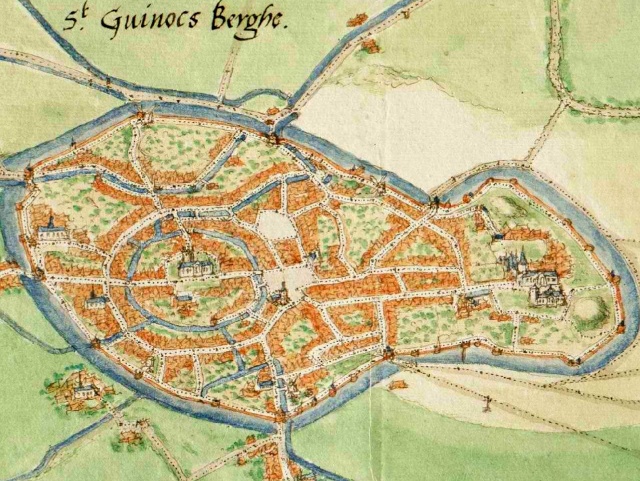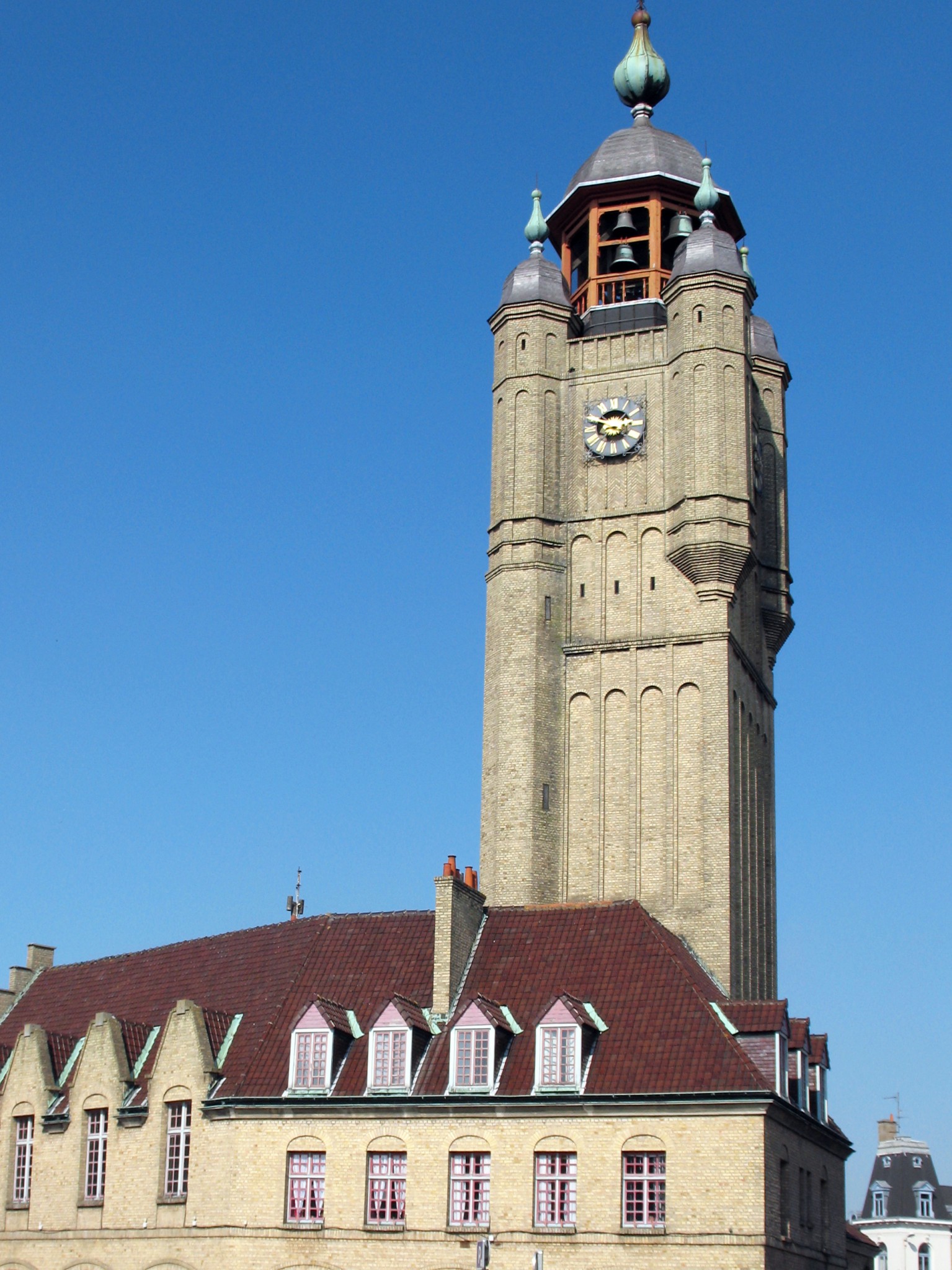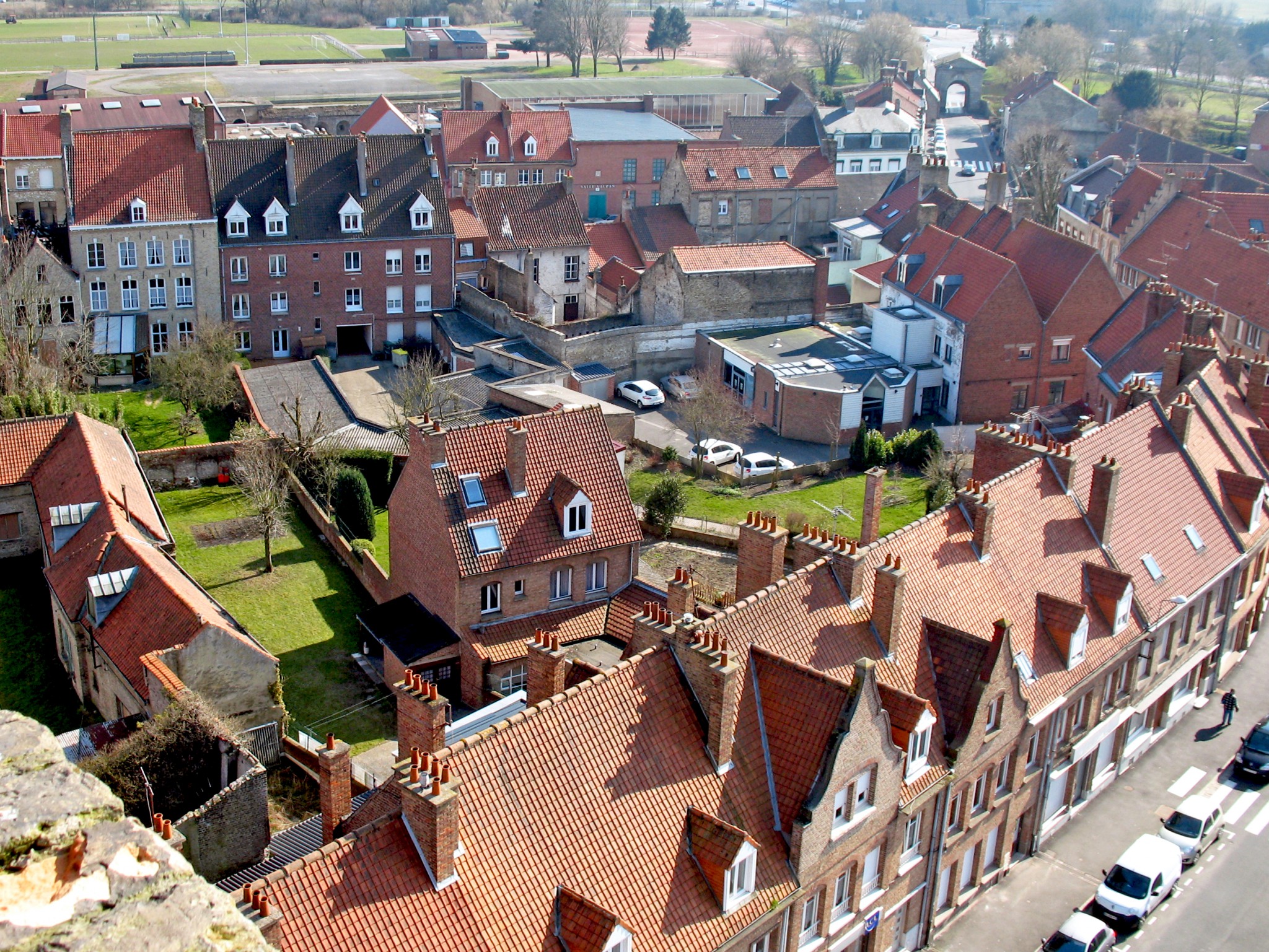Nicknamed the “other Bruges of Flanders”, Bergues is a welcoming little town thanks to the extensive restoration works undertaken after the war. It has remained an attractive town full of character with its fine Flemish-style houses, its belfry and the remains of the medieval ramparts. More recently, Bergues has gained notoriety thanks to the 2007 movie “Welcome to the Sticks” (Bienvenue chez les Ch’tis) produced by Dany Boon.

The origins of Bergues

Bergues was founded on a small hillock overlooking a swampy region about ten kilometres south of the sandy beaches of Dunkirk. The town took its name from the “groene berg” which means “green hill” in Dutch. The first mention of Bergues dates back to 857. In 885, Bergues was fortified by Baudoin the Bald, Count of Flanders, to protect itself from the Vikings. The Count entrusted the local religious authorities with the relics of Winoc, a Patron Saint who converted the region to Christianity at the end of the 7th century.

In 1022, Count Baudoin IV le Barbu founded a Benedictine abbey in Bergues which was very influential in the region until the French Revolution. The presence of an important spiritual centre as well as its proximity to the sea and its rich farming land helped the city to prosper in the Middle-Ages.

During the 11th century, the authorities of Bergues worked extensively to improve the swampland. At that time, the sea had not receded to Dunkirk as it has today. In the 13th century, the town was part of the London branch of the Hanseatic League, making Bergues a prosperous drapery centre like many other Flemish towns. In 1240, Countess Jeanne bestowed Bergues with a charter or “keure” which gave an additional status to the town. The construction of a belfry and the consolidation of the existing ramparts, both authorised by the Counts of Flanders, symbolised the great influence Bergues enjoyed from the 13th century.

In 1668, the War of Devolution between France and Spain ended with the Treaty of Aix-la-Chapelle. The Kingdom of France gained Bergues, as well as Lille and the territories of the Spanish Netherlands in the Flanders. King Louis XIV decided to develop Dunkirk rather than Bergues which consequently lost its influence and underwent a decline. The Sun King did, however, request Vauban to consolidate the ramparts there.
During the French Revolution, the influential abbey of Saint Winoc as well as all the convents established in the little town were torn down. The ruins of the abbey can still be seen today, in particular the marble door and two towers.

Bergues went through a tragic period of massive destruction during the Second World War when 80 per cent of the town’s buildings were razed and its mighty medieval belfry was blown up with dynamite.
After the war, the reconstruction of the old town was undertaken with great success, notably that of the belfry which recovered its carillon of 50 bells in 1961. It is now part of the Belfries of Belgium and France, a World Heritage Site of UNESCO.

Today, Bergues, a remarkable town in the Nord-Pas-de-Calais-Picardie region only 40km from the mouth of the Channel Tunnel, is worth a visit.
The old town of Bergues
Visitors can stroll down the cobbled streets lined by buildings with yellow brick façades.

In the centre of the town, the parish church of Saint Martin dates back to the end of the 16th century when it was initially built after the siege of the French army in 1558. The church is a hall church with three naves of equal height. The building was badly damaged during the Second World War, most notably on 16 September 1944 – the date of the liberation of Bergues – when the tower was blown up with dynamite. The tower was rebuilt by Gélis in the 1950’s, although not according to the initial design and only a few parts of the original church remain today: the south transept, the south portal and the chevet.

The fine Flemish-style town-hall was initially built in 1665 in another location. In 1871, it was relocated and rebuilt stone by stone by Outters in its current spot. The façade displays Flemish Renaissance architecture comprised of the blue stone of Soignies and the grey stone of Marquise. With its mullion windows, its pilasters and sculptured obelisks, Bergues Town Hall is reminiscent of the Veurne’s Palace of Justice, Tournai’s Cloth hall and Ghent’s Town Hall, all three situated in Belgium and dating from the same era. Observe on the façade the coat of arms of Philip IV, King of Spain, encircled with the neck chain of the Golden Fleece order.

The Belfry of Bergues can be considered as one of the most famous in Nord-Pas-de-Calais-Picardie region. The elegant belfry is a star since the success of the movie “Welcome to the Sticks” (in French: Bienvenue chez les Ch’tis). Parents and children are amazed to recognise the sets from their favourite comedy.


It is also possible to wander around the 5 km long ramparts, partly medieval and partly built by Vauban. The town has kept its entrance gates: Porte de Cassel, Porte de Dunkerque, and Porte de Bierne, as well as a few towers (Nekerstor and Guy de Dampierre).

Visit the official Tourist Board website of Bergues and Hauts-de-Flandres.
Featured image: © Michelle Martin – French Moments



